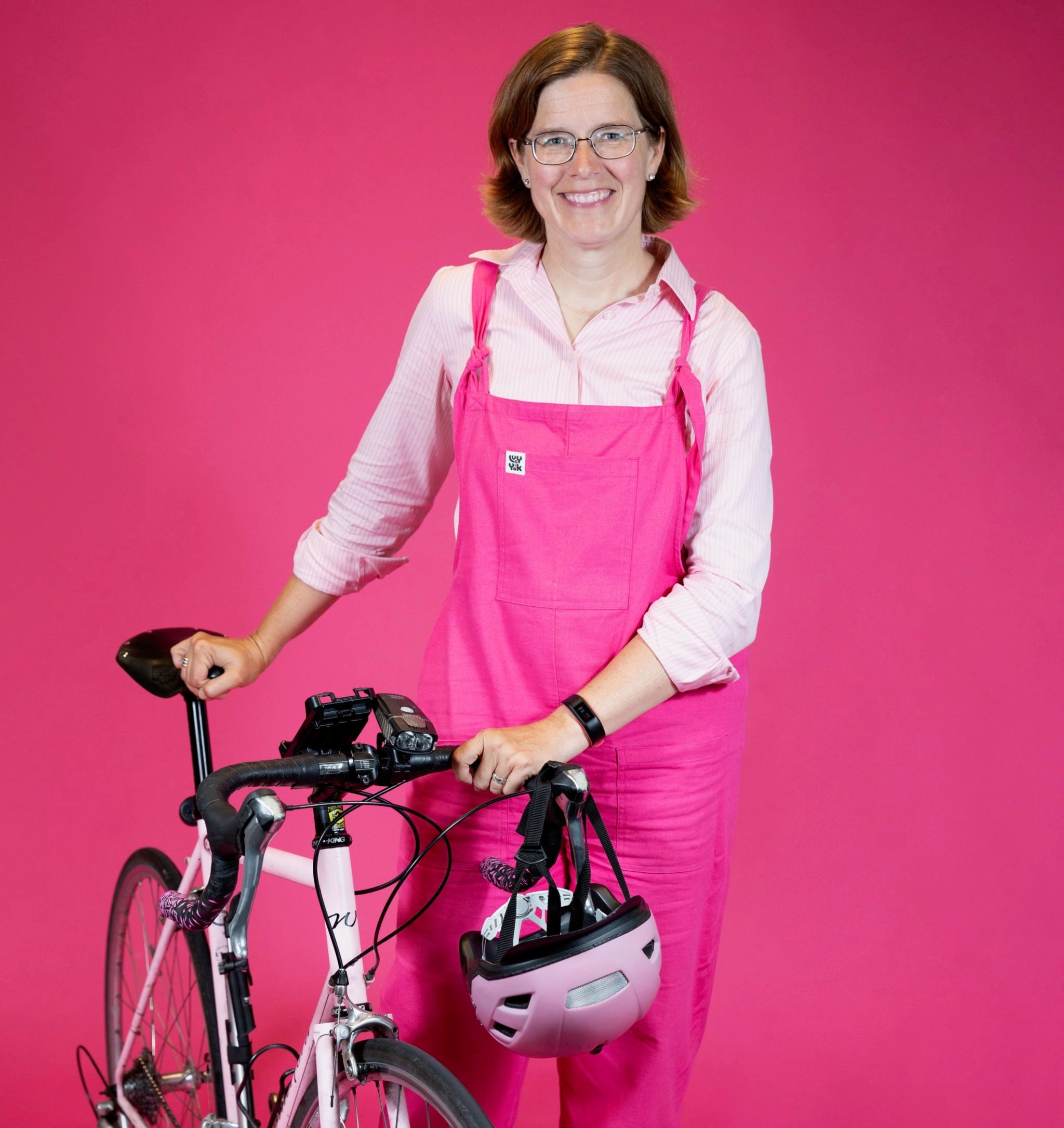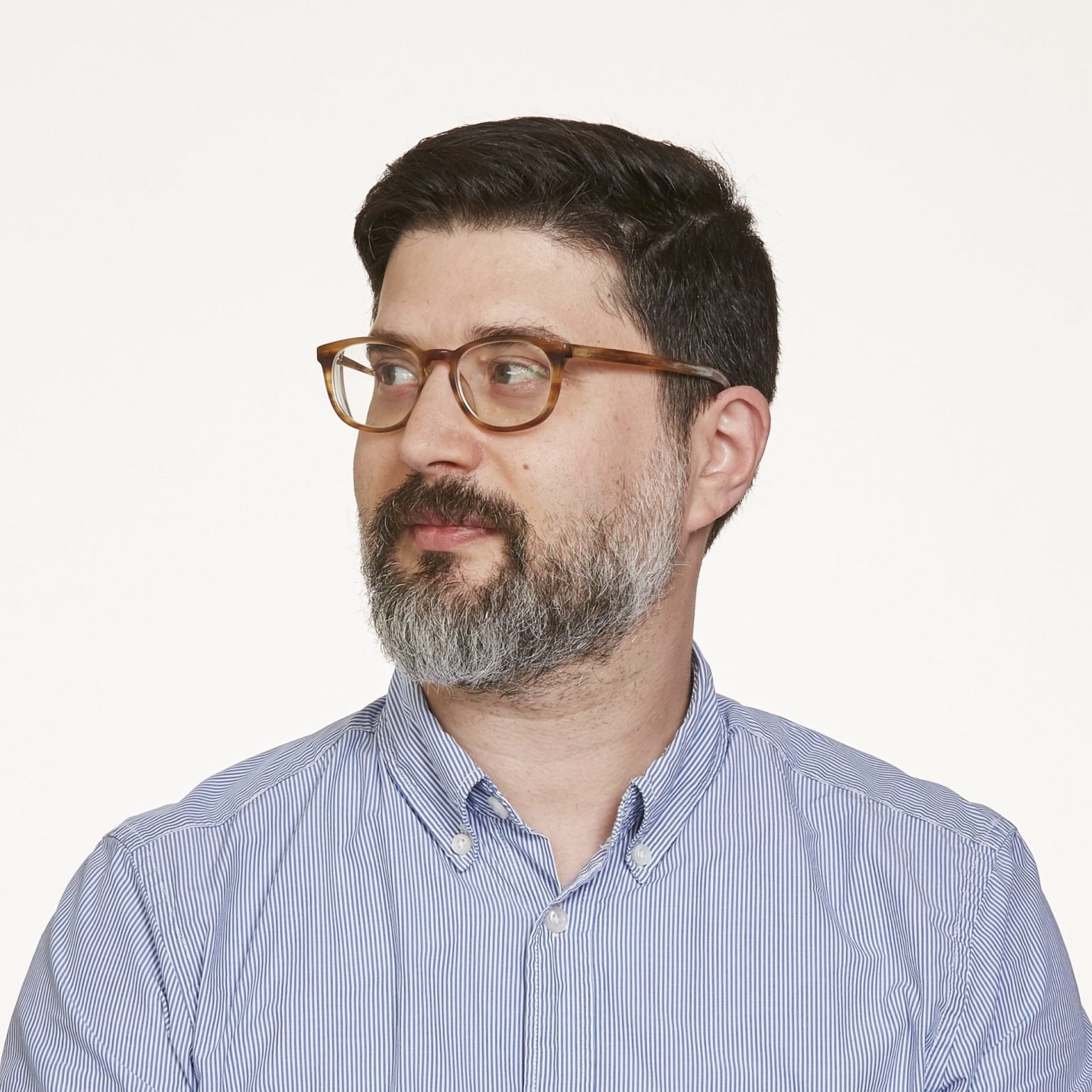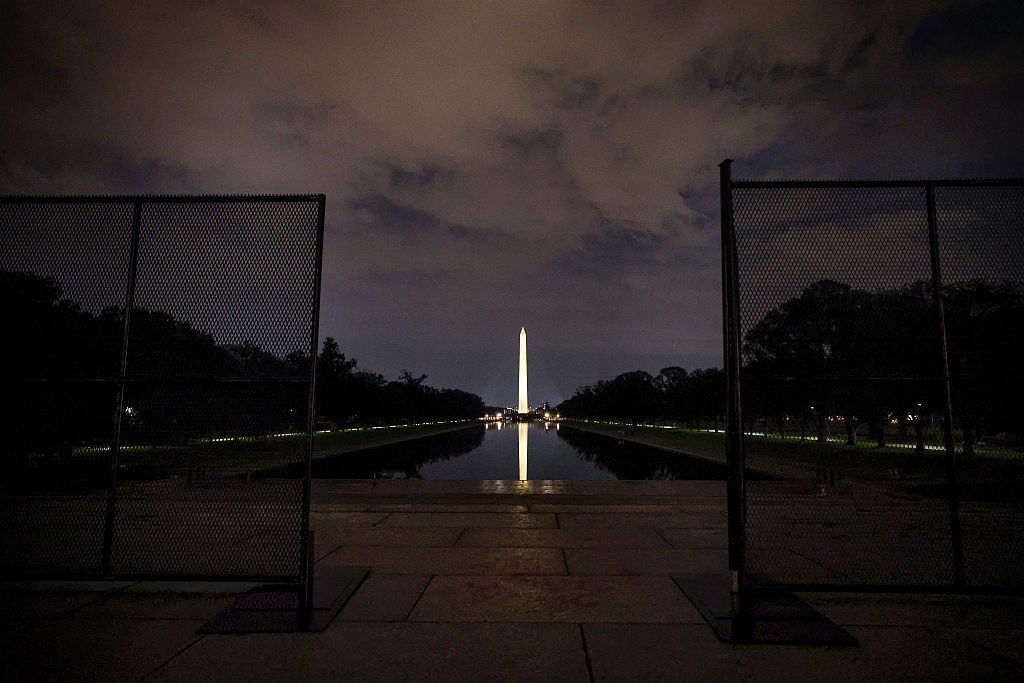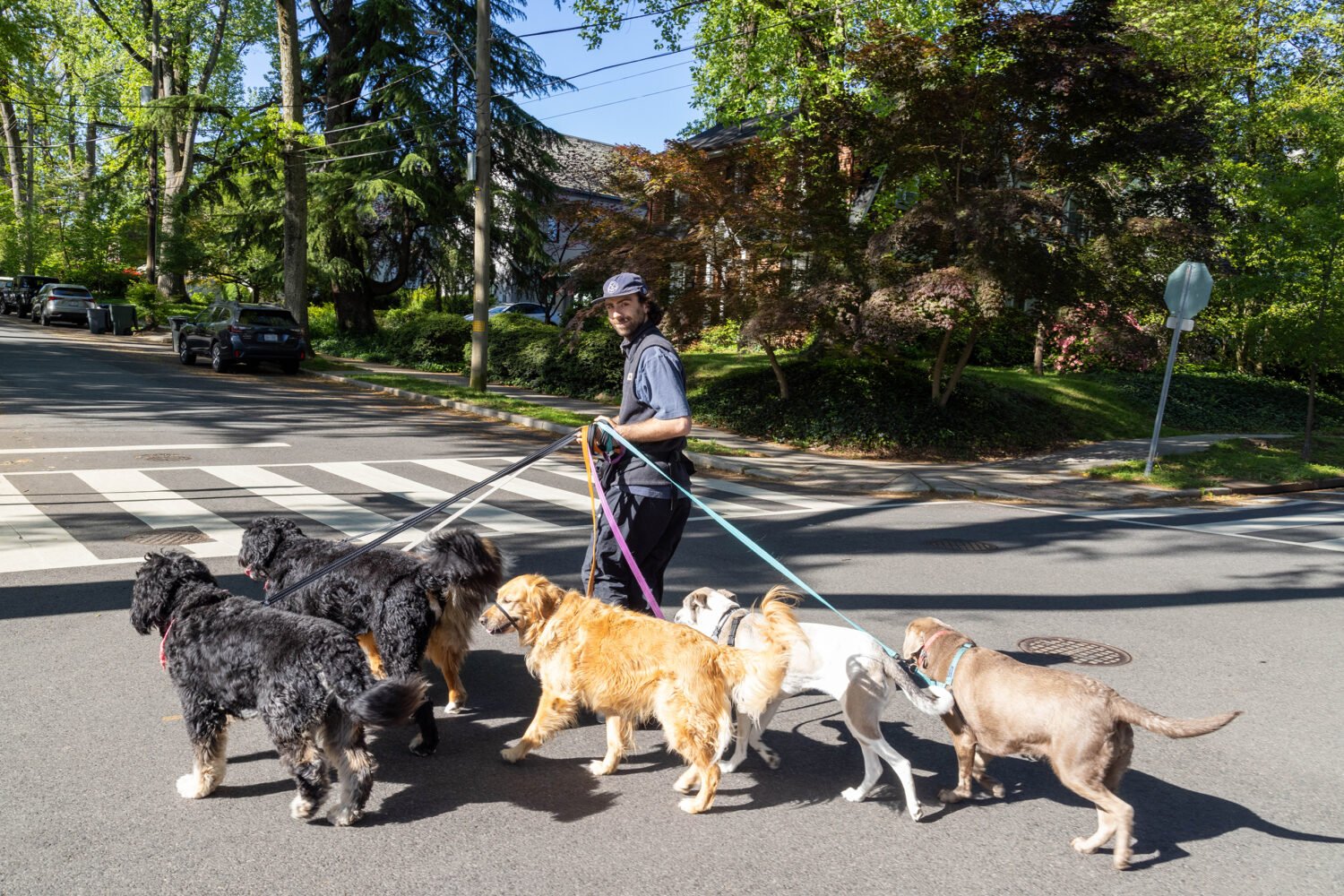The DC area is in the middle of a bicycle boom, with riders taking to Capital Bikeshare in record numbers and two-wheeled travelers zipping around via a growing network of bike lanes. Few people are more excited about this than Elizabeth Kiker, who took over as executive director of the Washington Area Bicyclist Association in April. “I’ve been so thrilled when I’m at a bike lane and I stop and count the cyclists,” she says. “I see what their gender is, what their race is, what their body type is. It’s like, wow, look at all of the diversity and all of the amazing people out riding!”
WABA is the city’s leading bike group, with a dual mission to advocate on behalf of bicyclists and to spread the word through classes, group rides, and other educational efforts. Kiker also now finds herself in the middle of a fierce debate over bike infrastructure, which has lately been playing out in arguments about the planned revamping of Connecticut Avenue.
A native of Texas, Kiker previously worked for other cycling organizations, including the DC-based League of American Bicyclists, and most recently served as head of development at the women’s shelter House of Ruth. She lives in Northern Virginia and—naturally—pedals her way to work. I met up with her at WABA’s Adams Morgan office, which is equipped with a heavily used wall-mounted bike rack. And, of course, I was obligated to travel to the interview on a bicycle—my preferred mode of transport these days. That meant a somewhat harrowing, bike-lane-free trip down Connecticut Avenue from my home.
So let me tell you about my ride here just now. I almost hit a pedestrian who walked in front of me looking at her phone. I had to brake hard because a car ran a red light. And I was passed by a guy on a bike flying down the middle of the avenue with both hands in the air. It’s a little crazy out there! Given that my experience wasn’t great for the pedestrian or the driver or me on my bike, why are some people so opposed to the Connecticut Avenue bike lanes, which would make everyone safer?
Parking. That’s really the only reason. And I empathize: Parking is something people are used to, and it’s hard to find a different strategy. DC parking can be a complicated issue. But I don’t know why thousands of pedestrians, bicyclists, and drivers are inconvenienced so that [a far smaller number] of people can park. And like you say, it’s bad for pedestrians, it’s bad for drivers. No driver wants to kill someone, but it’s what happens far too often. But we’re very much hoping that [the bike lanes] get pushed forward very quickly and happen very soon.
Parking is definitely a big part of it, but opponents also talk about how it’s going to push traffic onto the side streets and it’s going to slow everything down and all this other stuff that’s thrown out there.
In my opinion, the parking is what gets people like, “I’ll sign that petition too.”
Then, of course, there are people who, due to age or disabilities or other reasons, can’t bike or walk and do need a place to park. But it seems like that’s being factored into the plans.
It is. We’re not saying, “Oh, people with disabilities should just sit in their homes.”
The reality is that Connecticut Avenue doesn’t seem like it’s working for today’s needs. It’s not just about bike lanes: It’s about reconfiguring the whole setup.
Well, and safety. You were saying [that opponents worry] it will slow things down. That’s the point! So many roads in DC, in Virginia, in Maryland were designed at a time when it was like, How can we go fast? And now it’s like, Oh, [people] die. And that’s not a tradeoff we are willing to make anymore. So yes, I hope it does slow it down. But it’s really hard, even with one street—you have years of fighting.
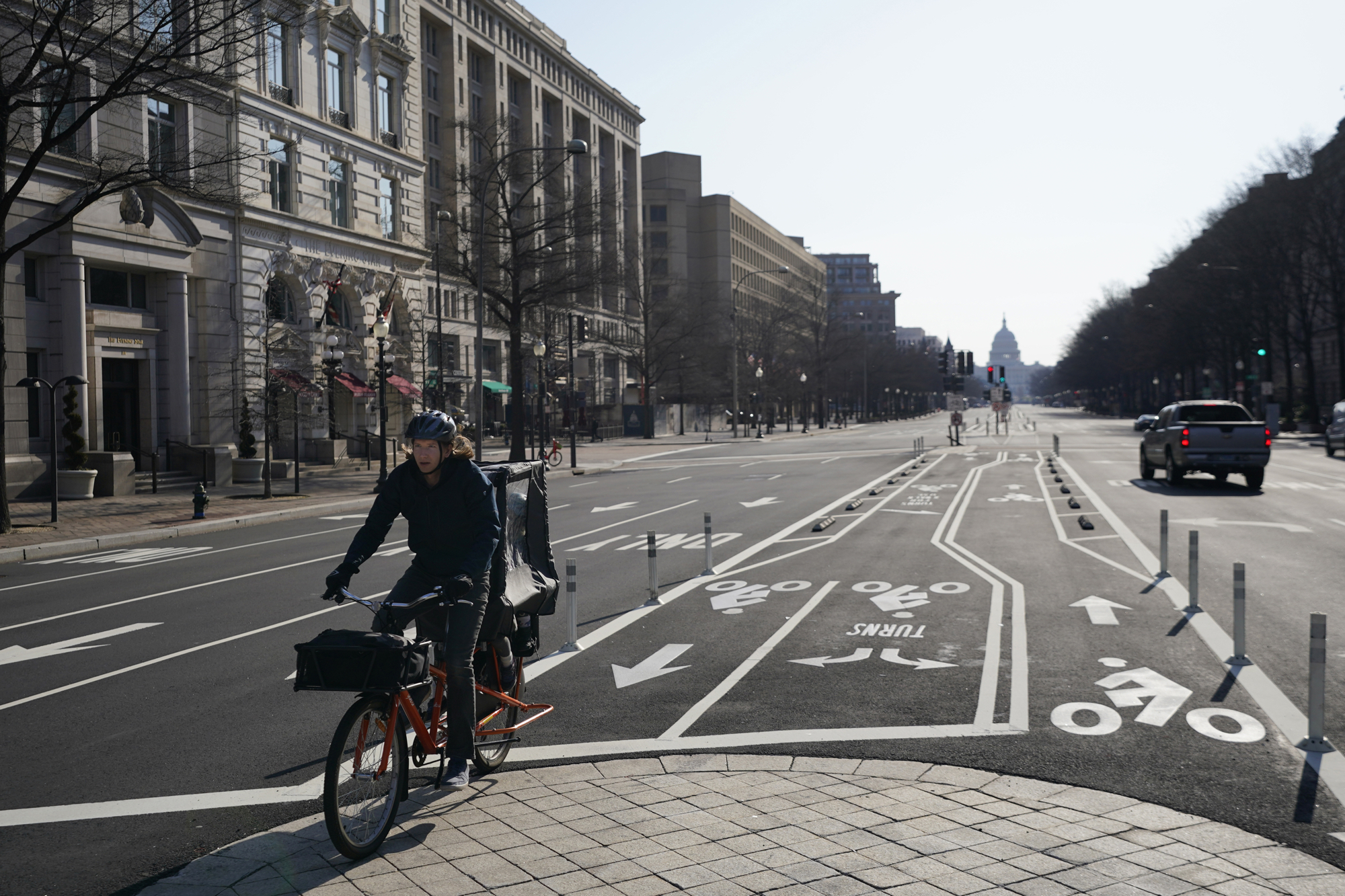
I think so much of the resistance is because it’s taking so long. If it just got done, I believe people would realize it’s not a big deal.
Whenever I talk to people, I’m like, “It will be fine! Let’s just make it happen and you’ll see, it makes everything better.”
Speaking of it taking a long time, I found a letter to the editor from a former head of the WABA, one of your predecessors, published in the Washington Post. It calls for funding for bike lanes to “help reduce bike-auto conflicts and accidents.” And it points out that biking is a great way to commute and is getting more popular. Can you guess what year that was?
Um . . . 2005?
It was 1972! Why is resistance to biking so entrenched that it’s taken 50 years for these changes to happen?
I feel like so much good has happened in the last 15 years. I started working in biking [advocacy] in 2005, and biking around DC was night-and-day. Have you been biking here for a long time?
Since I was a kid.
Think of when you were a kid: Now it’s so much better, and it will get so much better. In the last 15 years, there has been so much investment and so much moving forward. It just needs to continue and accelerate. And then if there’s something that’s wrong, we can tweak it. If it needs to change, okay. But let’s try it. Let’s stop talking about it—let’s just get it done!
But it is true that way more people drive or walk or take the Metro than bike. So here’s your chance to make the case: Why should people get on a bicycle?
I remember when I started commuting to work, someone said, “You can bike to work from here.” And I was like, “No, you can’t.” And there was a trail that went from my house to my office! I was like, “I had no idea.” It’s amazing how much freedom you feel and how great it is talking with people as you pass and saying hi. When I drive—even on an easy commute where there isn’t a lot of traffic—I’m like, Ugh, I’ve got to get that light. Ugh, it just turned red. The frustrations that you feel are, for me, so much stronger in a car. It’s just access to joy in your daily life, and we all need a little more joy in our daily life.
Yeah, that’s why I started biking again as an adult. You can make all these arguments about how it’s more reliable than the Metro and . . . .
It’s healthier and blah, blah, blah. But it’s like, it’s fun!
The flip side is I do get mad on my bike all the time when other people do obnoxious things, like drivers who illegally block lanes.
You do get angry. It’s not just joy all the time.
There is also this thing where, when I’m driving, I’ve been annoyed by people on bikes. And when I’m a pedestrian and a bike flies by, it’s unnerving. You only see things from your point of view at that moment.
I think you’re right. Whatever mode you’re doing [feels like] the mode that should have priority. It’s something that even happens—shhh—when you’re a bike advocate.
There’s also a dehumanizing effect where you only see the mode of transportation rather than the person. One time, I was riding legally on a sidewalk and somebody yelled, “Sidewalks are for walking!” I actually stopped and talked to them and said, calmly, “I’m allowed to bike here, and it really doesn’t feel safe on Connecticut Avenue.” It was a perfectly pleasant conversation, and it broke that barrier. I became a person rather than just “a bike.”
I find those conversations really helpful—“Oh, we both were heard.” And that’s not true when you’re just in your mode: I’m right and they’re all wrong.
And of course there are bicyclists who behave badly and ride dangerously.
No, I have never seen a bicyclist break the law in any way. [Laughs.] In every mode, there are people who are not obeying. It doesn’t work to say, “Well, no one can bike because some bicyclists break the law.” Some people don’t yield the way they should. Yes, but a lot of us do. It doesn’t get your attention the way the person riding down the middle of the street with both hands in the air does. Yes, there are people in every mode that are not obeying the law. But that doesn’t mean the mode shouldn’t be prioritized and that safety shouldn’t be prioritized.
A couple years ago, I got an e-bike, which significantly changed my life. What impact do you see from the fast growth of e-bikes?
E-bikes are magical. The people we’re trying to reach, the [ages] eight to 80, the kids, the elderly, the women, the people who may not be in the best shape of their lives, e-bikes transform lives.
I’ll try not to take offense at “not in the best shape of your life.”
[Laughs.] E-bikes help so many people have access to bikes. They’re transformative.
I see you still ride a regular bike, though.
My 15-year-old pink bike. My husband and my father bought that for me when my son was born. It’s very tender to me. It was custom-made for me, and it’s the color I love. Part of the joy of biking for me is that story and that bike and who gave it to me and why they gave it to me. It’s just it’s a very emotional connection.
If you could wave a magic wand and do one thing to improve things, what would it be? What’s the thing?
The thing would be putting every dollar for transportation—and that’s a big dollar amount—to Vision Zero [Mayor Bowser’s ongoing effort to eliminate traffic deaths]. So if there is a crash and a traffic death at an intersection, we’re going to figure out why and we’re going to fix that intersection. And I mean fix it. And that is our only priority. So many deaths are pedestrians and cyclists. It is not proportional. So that’s the magic wand that I would wave: Every transportation dollar, Vision Zero, fix it, make it happen.
And the thing is, it’s fixable!
All of the solutions are there. It’s just money. And money matters, but if the DC Council was like, “What could we do?,” it’s that. The thing is, America has decided this level of traffic deaths is okay. It is not reasonable, and it needs to be fixed. And it really disproportionately affects bicyclists and pedestrians. So if we did do that, we would be a lot safer. Then everybody would come out and bike with us and transform the whole city.
This article appears in the September 2023 issue of Washingtonian.

